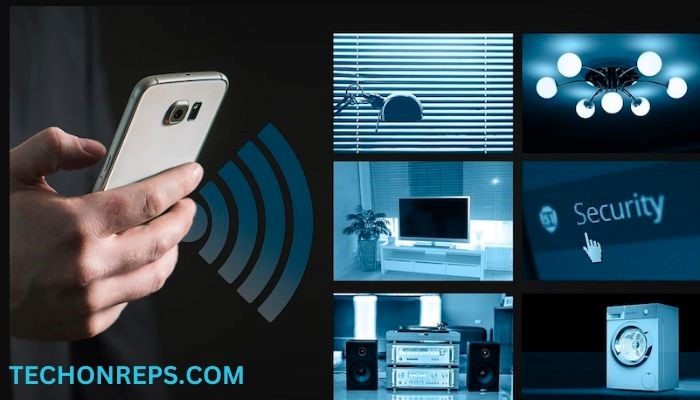Troubleshooting Your Smart Home Frequent Issues: Common Issues and Solutions
Smart home technology refers to the integration of various devices and systems within a home to create an interconnected network that can be controlled and automated. This technology allows homeowners to remotely control and monitor their home’s appliances, lighting, security systems, and more through a smartphone or voice commands. The benefits of using smart home devices are numerous, including increased convenience, energy efficiency, and enhanced security.
However, like any technology, smart home devices are not without their issues. Common problems encountered by smart home users include connectivity issues, compatibility problems, security concerns, voice assistant problems, smart lighting issues, thermostat problems, entertainment system issues, and automation problems. In this article, we will explore these common issues and provide troubleshooting steps and tips for resolving them.

Connectivity Problems: How to Fix Wi-Fi and Bluetooth Issues
Connectivity problems are one of the most common issues faced by smart home users. These problems can arise due to various factors such as weak Wi-Fi signals, interference from other devices, or outdated firmware. To improve Wi-Fi and Bluetooth connections in your smart home, there are several tips you can follow.
Firstly, ensure that your Wi-Fi router is placed in a central location in your home to maximize coverage. Avoid placing it near walls or other objects that may obstruct the signal. Additionally, consider upgrading your router to a newer model that supports the latest Wi-Fi standards for faster and more reliable connections.
If you are experiencing Bluetooth connectivity issues with your smart home devices, try moving the devices closer to each other to reduce interference. You can also try resetting the Bluetooth settings on your devices or updating their firmware to the latest version.
When troubleshooting common connectivity problems, start by rebooting your router and modem. This can often resolve temporary issues with your internet connection. If the problem persists, check for any firmware updates for your router and install them if available. You can also try changing the Wi-Fi channel on your router to avoid interference from other devices.
Compatibility Issues: Troubleshooting Smart Home Devices
Compatibility issues can arise when trying to connect different smart home devices from different manufacturers. Factors that affect device compatibility include different communication protocols, software versions, and hardware requirements. To ensure device compatibility in your smart home, there are several tips you can follow.
Firstly, research and choose devices that are known to be compatible with each other. Look for devices that support common communication protocols such as Zigbee or Z-Wave, as these protocols allow for interoperability between different brands.
Before purchasing a new smart home device, check its compatibility with your existing devices and smart home hub. Most manufacturers provide compatibility information on their websites or in the product specifications. If in doubt, reach out to the manufacturer’s customer support for clarification.
When troubleshooting compatibility issues, start by ensuring that all your devices are running the latest firmware or software updates. Manufacturers often release updates to improve compatibility and fix bugs. If the problem persists, try resetting your devices and re-pairing them with your smart home hub or app.
Security Concerns: How to Protect Your Smart Home from Cyber Threats
As smart home technology becomes more prevalent, so do the security concerns associated with it. Smart homes are vulnerable to cyber threats such as hacking, unauthorized access, and data breaches. To protect your smart home network from these threats, there are several tips you can follow.
Firstly, secure your Wi-Fi network by using a strong password and enabling encryption such as WPA2. Avoid using default passwords or easily guessable passwords. Regularly change your Wi-Fi password to prevent unauthorized access.
It is also important to keep your smart home devices up to date with the latest firmware or software updates. Manufacturers often release updates to patch security vulnerabilities and improve device security. Enable automatic updates if available.
Consider setting up a separate network for your smart home devices to isolate them from your main network. This can help prevent unauthorized access to your personal devices and data. Additionally, consider using a firewall or network security solution to monitor and block suspicious activity on your smart home network.
Voice Assistant Problems: How to Fix Issues with Alexa, Google Assistant, and Siri
Voice assistants such as Alexa, Google Assistant, and Siri are commonly used to control smart home devices through voice commands. However, users may encounter issues with voice assistants not responding or not understanding commands. To troubleshoot voice assistant problems, there are several steps you can take.
Firstly, ensure that your voice assistant device is connected to the internet and has a stable Wi-Fi connection. Check the Wi-Fi signal strength in the location where the device is placed and consider moving it closer to the router if necessary.
If your voice assistant is not responding or understanding commands, try restarting the device. This can often resolve temporary software glitches. You can also try resetting the voice assistant device to its factory settings and setting it up again.
If you are experiencing issues with specific commands or skills, check for any updates for the voice assistant app or firmware. Developers often release updates to improve compatibility and fix bugs. You can also try disabling and re-enabling the specific skill or command that is causing the problem.
Smart Lighting Issues: Troubleshooting Common Problems
Smart lighting systems allow homeowners to control their lights remotely and create customized lighting scenes. However, users may encounter issues such as lights not turning on or off, lights flickering, or lights not responding to commands. To troubleshoot smart lighting problems, there are several steps you can take.
Firstly, check the power source of your smart lights. Ensure that they are properly connected and receiving power. If you are using smart bulbs, make sure they are screwed in tightly and have a good connection with the socket.
If your smart lights are not responding to commands, check the Wi-Fi or Bluetooth connection between the lights and the smart home hub or app. Ensure that the lights are within range of the hub or app and that there are no obstructions or interference.
If you are experiencing issues with specific lighting scenes or schedules, check the settings in your smart home app or hub. Make sure that the scenes or schedules are properly configured and that there are no conflicts with other settings.
Smart Thermostat Problems: How to Fix Temperature Control Issues
Smart thermostats allow homeowners to control their home’s temperature remotely and create customized heating and cooling schedules. However, users may encounter issues such as incorrect temperature readings, temperature fluctuations, or the thermostat not responding to commands. To troubleshoot smart thermostat problems, there are several steps you can take.
Firstly, check the power source of your smart thermostat. Ensure that it is properly connected and receiving power. If you are using batteries, make sure they are not depleted and replace them if necessary.
If your smart thermostat is not responding to commands, check the Wi-Fi or Bluetooth connection between the thermostat and the smart home hub or app. Ensure that the thermostat is within range of the hub or app and that there are no obstructions or interference.
If you are experiencing issues with temperature control, check the settings in your smart home app or hub. Make sure that the temperature setpoints and schedules are properly configured and that there are no conflicts with other settings.
Smart Home Entertainment Issues: Troubleshooting Smart TVs and Speakers
Smart TVs and speakers allow homeowners to stream content from various sources and control their entertainment systems through voice commands. However, users may encounter issues such as audio or video lag, streaming errors, or devices not connecting to each other. To troubleshoot smart home entertainment problems, there are several steps you can take.
Firstly, check the internet connection of your smart TV or speaker. Ensure that it is connected to the internet and has a stable Wi-Fi connection. Check the Wi-Fi signal strength in the location where the device is placed and consider moving it closer to the router if necessary.
If you are experiencing audio or video lag, try restarting your smart TV or speaker. This can often resolve temporary software glitches. You can also try adjusting the audio or video settings in the device’s menu to optimize performance.
If you are experiencing streaming errors, check the internet connection of your smart TV or speaker. Ensure that your internet speed is sufficient for streaming and that there are no network issues. You can also try clearing the cache and data of the streaming app or restarting the app.
Smart Home Automation Problems: How to Fix Issues with Routines and Scenes
Smart home automation allows homeowners to create routines and scenes that automate various tasks and actions in their homes. However, users may encounter issues such as routines not running as expected, scenes not activating, or devices not responding to automation commands. To troubleshoot smart home automation problems, there are several steps you can take.
Firstly, check the settings in your smart home app or hub for the routines or scenes that are not working. Make sure that all devices and actions are properly configured and that there are no conflicts with other settings.
If your routines or scenes are not running as expected, check the triggers or conditions that activate them. Ensure that the triggers or conditions are properly set up and that they are being met. You can also try adjusting the timing or conditions to see if that resolves the issue.
If your devices are not responding to automation commands, check the connectivity between the devices and the smart home hub or app. Ensure that the devices are within range of the hub or app and that there are no obstructions or interference.
Conclusion:
Maintaining a smooth-running smart home requires regular maintenance and troubleshooting. To prevent common smart home issues, there are several best practices you can follow.
Firstly, keep all your smart home devices up to date with the latest firmware or software updates. Manufacturers often release updates to improve compatibility, fix bugs, and enhance security. Enable automatic updates if available.
Regularly check the settings in your smart home app or hub for any conflicts or errors. Ensure that all devices and actions are properly configured and that there are no overlapping schedules or triggers.
Lastly, educate yourself on the latest smart home technology trends and best practices. Stay informed about potential security threats and take steps to protect your smart home network. Regularly review and update your passwords, enable two-factor authentication if available, and be cautious when granting permissions to third-party apps or services.
In conclusion, while smart home technology offers numerous benefits, it is not without its challenges. By following the troubleshooting steps and tips outlined in this article, you can resolve common issues and maintain a smooth-running smart home. With proper maintenance and attention to security, you can enjoy the convenience and efficiency that smart home technology has to offer.



